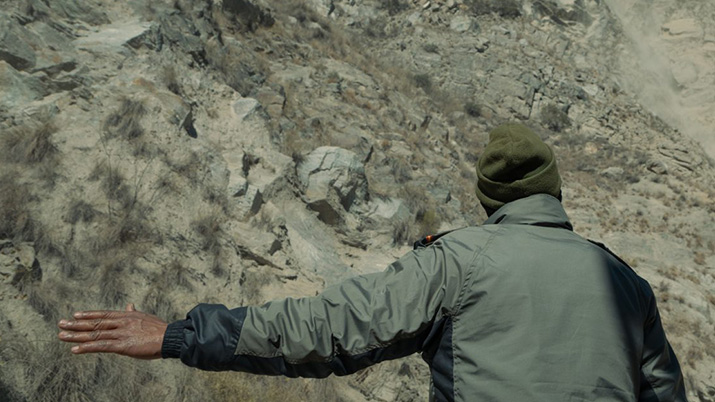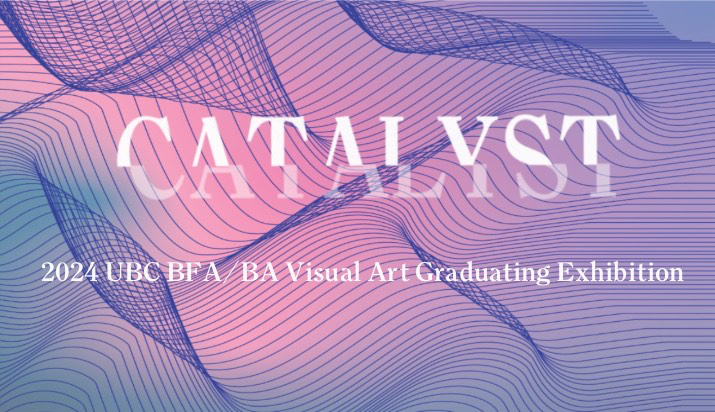A Crimp in the Fabric: Situating Painting Today, which includes a keynote lecture by Isabelle Graw (on September 28) and day-long symposium (on September 29), presents a range of perspectives reflecting on the current state of contemporary painting practices. A Crimp in the Fabric: Situating Painting Today is co-organized by the University of British Columbia, Emily Carr University of Art + Design, Simon Fraser University and the Vancouver Art Gallery.
This symposium is an opportunity for artists, writers, curators, students, educators and thinkers to come together, and question the relevance and importance of painting today. It will be an opportunity to listen to and discuss issues arising from various and diverse artistic positions represented by panelists, in the context of the many concurrent painting exhibitions occurring throughout Vancouver.
When: Friday, September 29, 9:00 a.m. – 5:30 p.m.
Where: Simon Fraser University, Djavad Mowafaghian World Arts Centre, 149 W. Hastings Street, Vancouver
On Friday, September 29, a day-long symposium with four moderated panel sessions comprised of Canadian and international artists and scholars will be held at the World Arts Centre, Simon Fraser University. Each of the panels will focus on a theme pertinent to issues in contemporary painting. The discussions will cover a range of topics, such as questions of aesthetics and the agency of materials; the economic conditions of painting (and its history); the role of the artist’s studio as a site of intellectual and material production; and the ways in which the practice of painting resists easy translation into words.
Panel 1 – 9:30 am – Diviners, Materialists, and Creatives
Sean Alward, Derek Dunlop, and Athena Papadopoulos in conversation with Carolyn Stockbridge
This panel will focus on the painter, the painting, and paint as agents, with a particular emphasis on materials and process being the foundation for ideas and affective qualities within an artwork. The geological foundations of paint, how paint can embody political histories, how paint becomes transmogrified through incorporation of the commodity fetish—these approaches seek to resist the market-driven relations that permeate art. “Diviners” relates to the process of channeling energies. It refers to people who can divine for water or minerals, and discover things by intuition. Tapping into the mineral intelligence of paint can also be understood to resist the primacy of ratiocentrism and language in our culture. “Creative” is used ironically, to deal with the tendency in corporate culture to hold up creative people as something to tap into monetarily, to brand their processes and production, based on their ability to distribute cultural cachet.
Panel 2 – 11:20 am – Making a Difference: The Effective Capacity of Painting
Christine Major, Francine Savard and Charlene Vickers. Nicole Ondre moderator/respondent.
Considers the question of painting as a matter of, not just its materiality, but also of how it exceeds its thingness to create significance within the contexts it is placed. The artist cannot be “merely” a painter, but is part of an interrelated chain of efficaciousness. What considerations confront the painter beyond the demands of the surface?
Panel 3 – 2:00 pm – In the Studio: Painting as Thinking; Painting as Conversation
Jessica Groome, Sandra Meigs and Jinny Yu in conversation with Alison Shields
In this conversation, painters think out loud about their creative processes and the relationship between thinking and making through studio work. By discussing the process of making in the studio the presenters will reflect on what the now commonly used phrase “thinking through making” means for them. In talking about the process of painting, the artists reflect on their approaches to materials, shifts in practice over time and painting as a means of engaging with personal, social and political ideas.
Panel 4 – 3:40 pm – Like Hands Stuck in a Mattress: The Difficulty of Talking Painting
Marvin Luvuala Antonio, Mark Igloliorte, Adrianne Rubenstein and M.E. Sparks in conversation with Elizabeth Mcintosh and Ben Reeves
Asks the questions: How to talk about painting? How not to talk about painting? And given that painting is the most important thing that painters do, (why) should painters talk about painting anyway?
For more information, please visit: https://crimpinthefabric.ca/
Contact: cheyanne turions, cturions@vanartgallery.bc.ca


